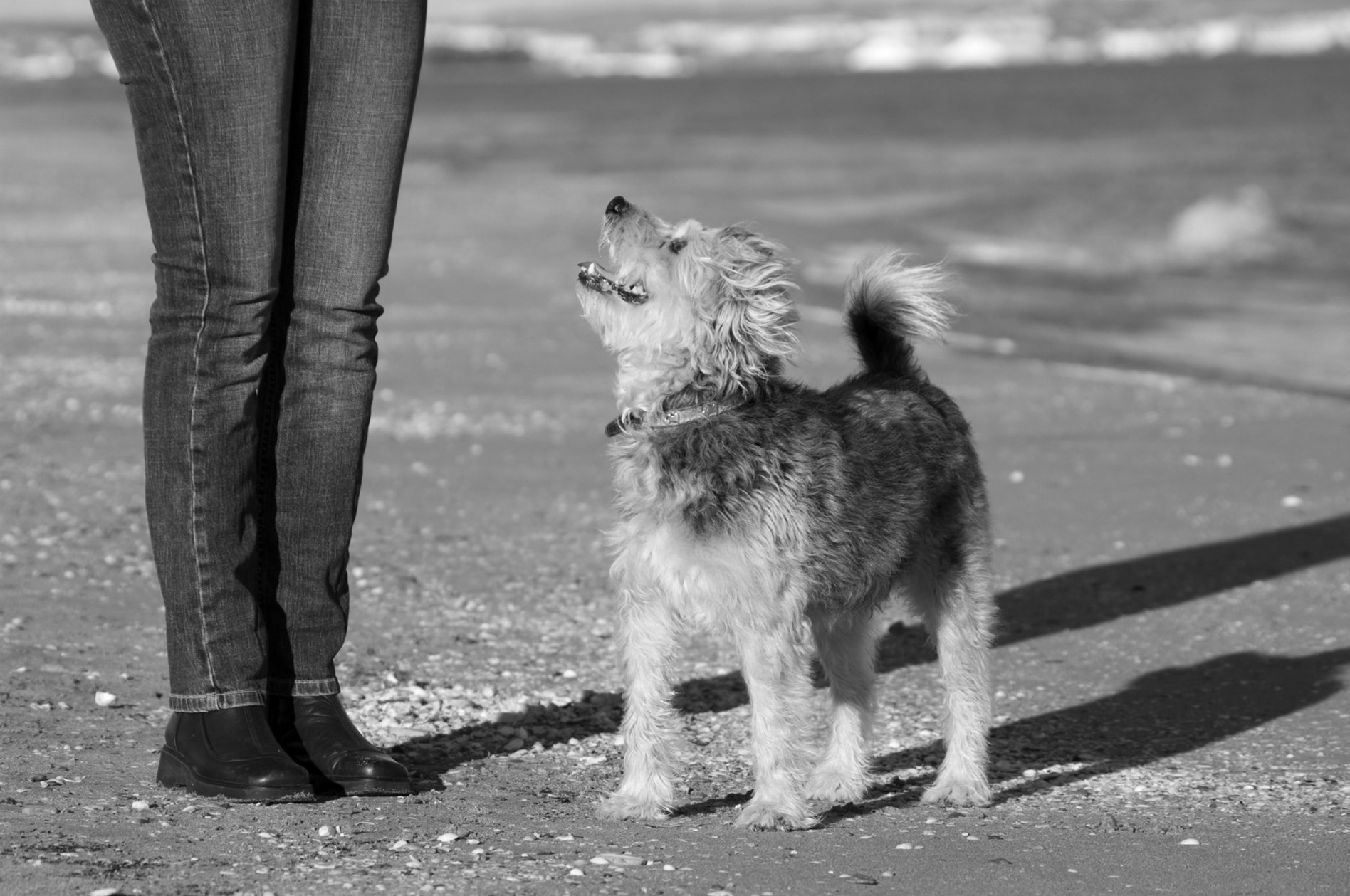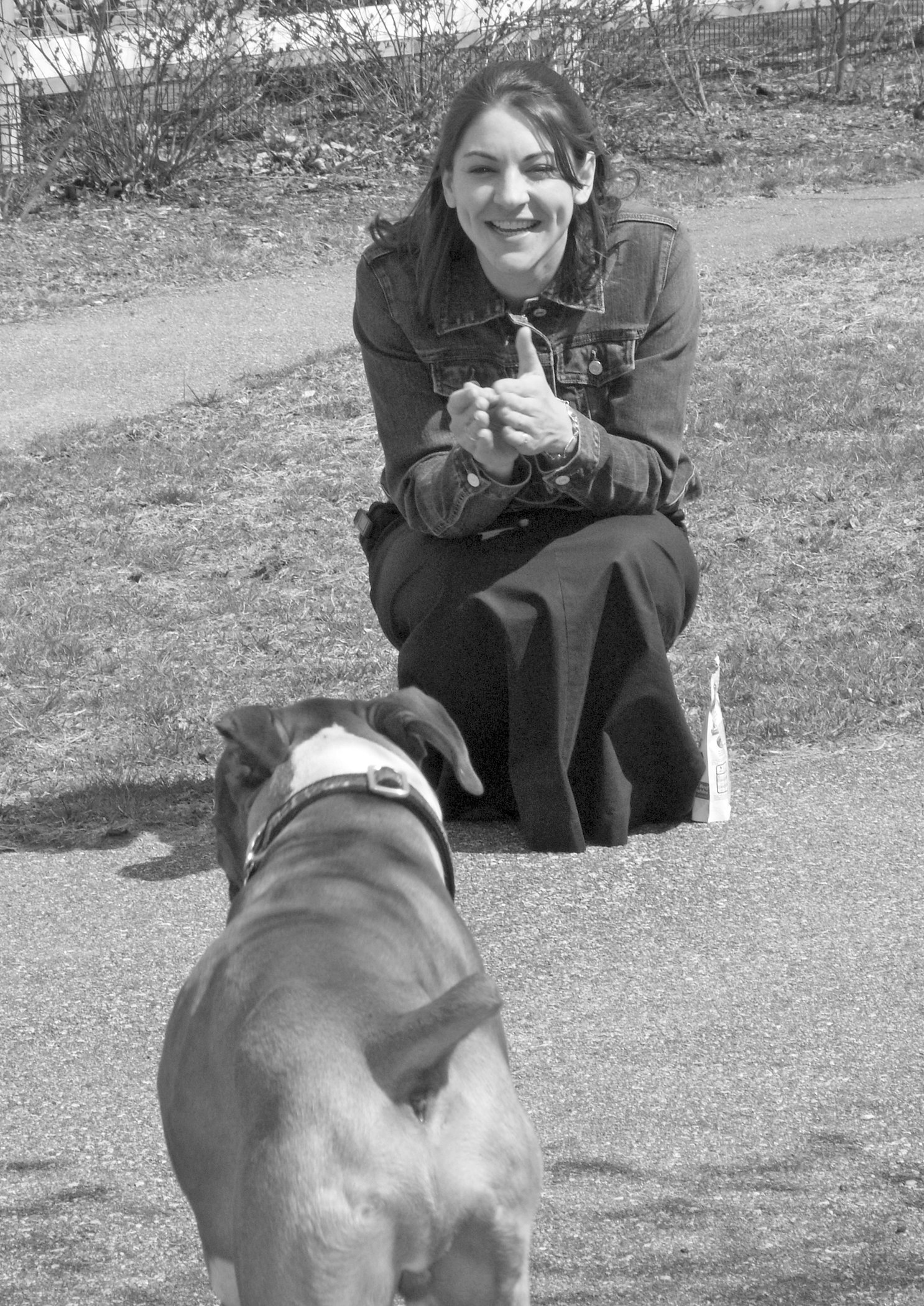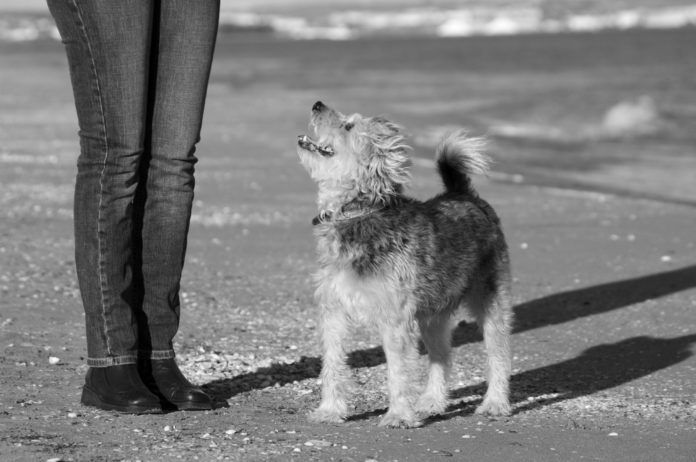“Most people, if you ask them, ‘What is the one thing you’d most like your dog to be able to do?’ respond by saying, ‘Come when I call.'” So reports Nicholas Dodman, BVMS, the director of the Animal Behavior Clinic at Tufts. It makes sense. If your dog understands “Come,” you can keep him safe. He won’t run into the street, get into scrapes with other dogs, or otherwise put himself in harm’s way. The one-word cue from you will keep him from engaging in risky behaviors.

The difficulty, Dr. Dodman says, is that “Come” denotes a fairly high level of training, and owners “seem to want to make it happen without first having taught their dog the basics. It’s akin to wanting to play the guitar like Eric Clapton but trying to skip learning scales.”
Before a dog owner even goes near “Come,” she needs to make sure her dog is fluent in “Sit,” “Down” (which means “lie down on the floor”), and “Leave it” (short for “keep your nose of out something — or someone”). Those are relatively easy because the dog is right next to you, perhaps even on a leash, when you teach all those things.
“Come” is generally regarded as “the next level” rather than where you start, Dr. Dodman says, because it’s not basic obedience by definition. “It has to be done by remote control.”
Dr. Dodman remembers the difficulty of his own first lesson in “Come,” when he was transitioning out of anesthesiology and into animal behavior. “I was working with a trainer who had a young puppy,” he says. “The trainer said, ‘Have this puppy come to you when you call him.’
“So I stood there like a pillar of salt and said, ‘Come.’ Of course, the puppy did not move.
“‘You’re not putting enough energy into it,’ the trainer told me. ‘Why don’t you try saying it again, way more enthusiastically, like you’re so much more exciting than anything that’s keeping the dog’s attention over there? Go down low, crouch, and clap your hands. Say his name and tell him he’s a good boy even before he moves.’
“I tried it,” Dr. Dodman relates, “and the little puppy came trotting straight across to me.”

The Ins and Outs of “Come”
“Come” is the only triple command, Dr. Dodman says. You have to:
Say the dog’s name, because otherwise he won’t know you’re talking to him and not someone else.
Say the word “Come.”
Offer exuberant praise, such as “Good Boy,” even before the dog gets going. That’s to let him know he’s not in trouble. This is different from other commands in that in all other instances of training, praise comes only after the dog has completed the desired behavior.
Do not start teaching your dog the command outside. Begin in your kitchen or living room or some other indoor space. As you call your dog’s name and say “Good boy!” as animatedly as possible, drop to one knee and open your arms so that your gestures are as inviting and animated as your voice. Once the dog comes, perhaps from a distance of only five or 10 feet at first, tell him again as enthusiastically as you can what a good boy he is and offer him a delectable food treat — maybe a tiny piece of cheese or meat — as you stroke the side of his face ever so affectionately.
Once your dog gets the hang of “Come” indoors, you can graduate to outside, in a fenced-in yard if possible. If that’s not possible, you may want to use a very long training line attached to the dog’s collar, perhaps a lightweight nylon washing line or a lead that’s 30 to 40 feet long.
“Let’s say the dog wanders away from you to stare at the sky or watch a bird in a tree,” Dr. Dodman says. “Try the triple command. If he doesn’t respond, reel him in slowly, hand over hand, without any jerking movements and no punishment involved.” When he’s finally at your feet, tell him what a good boy he is and what a nice job he did, offering him the delicious treat and the stroking, even though you’re the one who made “Come” happen. You want to habituate him to the sequence — which is that when you say “Come” and he complies, a wonderful interaction will occur.
Once your dog “gets it” in the backyard, you can move to wider open spaces, continuing to train him still. “The process should take two or three weeks,” Dr. Dodman says, unless you have a scent or sight hound or other dog with a high predatory drive. For such pets, it’s hard to make yourself more interesting than a small prey animal, but even in those cases, patience and consistency will go a long way.
Over time, you’ll be able to dispense with the food reward, or at least not give one every time. As we said last month in our article on getting a dog to stop jumping on people, intermittent rewards, where a dog is not sure if he’ll get the “prize” for being good, work better once training is solidly in place than a reward for each successful behavior. Due to brain chemistry, once-in-a-while “gold stars” are more satisfying.
The definition of success
The definition of a trained response, according to authorities such as zookeepers, is an animal’s being able to respond greater than 85 percent of the time. “You just can’t expect 100 percent no matter how well trained your pet,” Dr. Dodman says, having experienced the occasional lapse firsthand when his dog Rusty chased a fox who had a rabbit in its mouth. Dr. Dodman had to sweat it out, hoping the dog and the fox wouldn’t get into a tangle, until Rusty finally decided to come back to him on his own.
What it means is that no matter how well trained your dog is to come when you call, there is always going to be an element of risk that he won’t comply. For that reason, you have to use “Come” in conjunction with common sense. Don’t let your dog loose near a busy road or in a situation where you know he might encounter very aggressive dogs or other unfriendly animals. He means well and will listen to you most of the time, but you still always need to remain a couple of steps ahead.





